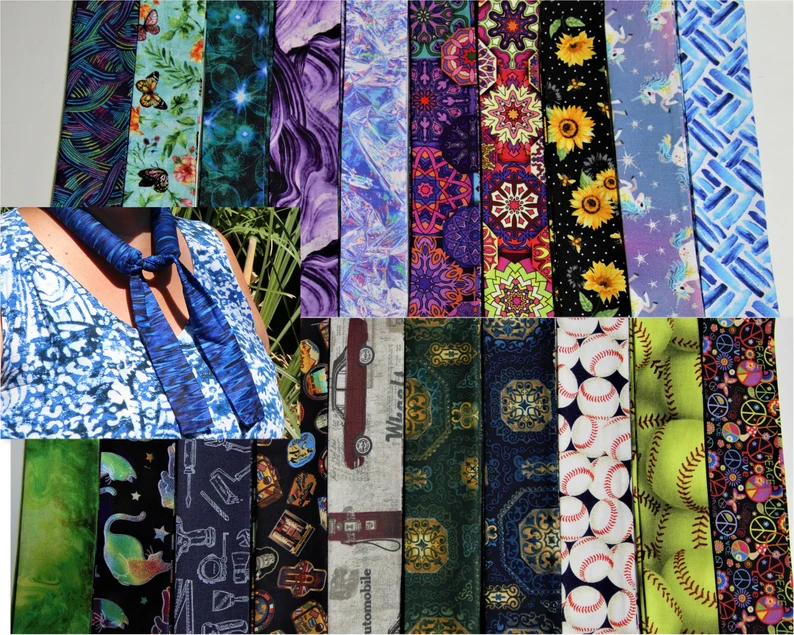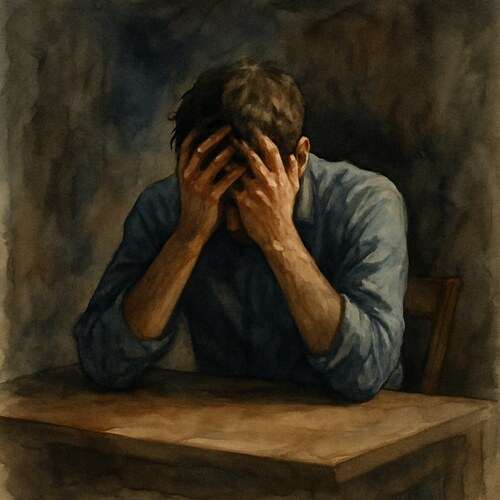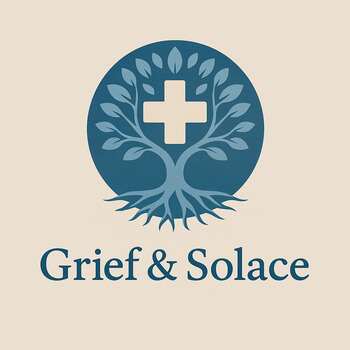Grieving Shingles: When Pain Returns After the Wounds Have Healed
Grief tied to shingles burns long after the blisters fade, haunted by lingering pain that rewrites how someone moves, rests, and lives.

This post blends real grief with grounded knowledge. It isn’t clinical. It isn’t distant. It’s meant to sit beside you—not above you. The story you’ll read is meant to reflect what so many feel when living through or witnessing this condition: confusion, exhaustion, and quiet forms of courage.
If what you read feels familiar, please speak with your doctor. Your pain deserves more than silence.
The Scars Faded, but the Pain Stayed
It started with an itch, but not just on the skin…beneath it. It was as if something was crawling through his nerves, dragging a hot wire beneath the surface. Then came the rash—red, angry, a belt of fire wrapping around his ribs like a warning sign. The doctors said it was shingles, a reawakening…a ghost of childhood chickenpox come back meaner, older, crueler. He didn’t remember being sick as a kid; he didn’t recall the virus ever entering his body, but he sure as hell remembered it coming back. At first, he thought it would pass—just a week or two, a little pain, some antivirals, and then it would be over. But the rash healed, and the pain didn’t. It clung to him, sharp and burning, like being lit from the inside out, and no one could see it.
🧠 Symptoms:
– Usually confined to one side of the body, with pain, burning, or tingling as often the first sign
– Red rash, typically unilateral, with clusters of fluid-filled blisters that crust over
– Sensitivity to touch and itching
– Other symptoms may include fever, headache, light sensitivity, fatigue
– Common rash location: a stripe around one side of the torso; can also affect face, neck, or near the eye (ophthalmic shingles)
– Some people experience nerve pain without a rash
He tried explaining it to others, describing how it felt like broken glass fused into his nerves. He said shirts hurt, wind hurt, and sometimes, nothing…especially nothing…hurt the worst of all. The doctors called it postherpetic neuralgia, explaining that it sometimes happened, that it could last months, years, maybe forever.
He didn’t cry…he just grew quiet, retreating into himself. He stopped going out, stopped wearing belts, and even stopped hugging his grandkids, just in case. He was ashamed, not of the rash itself, but of the vulnerability it revealed…the fact that something so old, so small, had brought him to his knees.
Risk Factors:
– Age over 50
– Immunocompromised states (HIV, cancer, organ transplant)
– Long-term steroid or immunosuppressive medication use
– Prior chickenpox exposure (most adults born before 1980 have been exposed)
Complications:
– Postherpetic neuralgia: persistent nerve pain after rash heals
– Vision loss if shingles affects the eye
– Neurological issues: encephalitis, hearing loss, facial paralysis
– Skin infections from improperly cared-for blisters
And still, he stood…not healed, perhaps…but seen.
Causes:
– Caused by varicella-zoster virus, which also causes chickenpox
– Virus remains dormant in nerve tissue after chickenpox infection
– Reactivates later in life, especially when immune function is suppressed
He once told me, “I beat cancer. But this? This just lingers.” Painkillers numbed it sometimes, but other times, they did nothing…just dulling his spirit instead of the fire under his skin. Still, he kept showing up, at breakfast, at birthdays, on slow walks around the block, where each step was an act of grit. He began talking more, sharing his experience with others…not for pity, but for recognition because invisible pain is a lonely kingdom. And when someone finally believed him, it was like exhaling for the first time in months.
Over time, the scars on his body faded, but the story stayed. It was etched deeper than the rash had ever reached—into his spirit, into the way he carried himself. He didn’t wear his pain on the outside, but it walked with him every day.
Contagion
– Shingles itself isn’t directly spread, but the varicella-zoster virus can transmit from open blisters to those who’ve never had chickenpox or the vaccine, causing chickenpox, not shingles
– Transmission occurs via contact with open lesions
– Precautions: avoid contact with pregnant women, newborns, and immunocompromised until blisters crust over
📘 Diagnosis & Treatment
Diagnosis
– Based on clinical history of pain plus characteristic rash pattern
– Laboratory tests (PCR, culture) from lesions if diagnosis is uncertain
Treatment
Antiviral medications (start within 72 hours):
– Acyclovir
– Famciclovir
– Valacyclovir
These help reduce symptom duration and complications
Pain management options include:
– Topical lidocaine (gel, cream, patch)
– Capsaicin patches
– Gabapentin or pregabalin
– Tricyclic antidepressants like amitriptyline
– Corticosteroid injections in severe cases
Self-care measures:
– Cool compresses
– Oatmeal baths or cool baths
– Stress reduction techniques
Prevention
– Shingrix vaccine recommended for adults 50+ or immunocompromised adults 19+
– Two doses, 2–6 months apart
– Not live, safe for immunosuppressed patients
– Significantly reduces risk and postherpetic neuralgia
Living With It
Shingles doesn’t just burn the skin—it lingers in the nerves and memory. One side of your body feels like it’s betraying you. A stripe of fire, an uninvited ache. Even after the rash fades, pain may remain—a ghost haunting the nerves you thought were healed.
It often strikes those already vulnerable—aging, immune-compromised, grieving. Shingles becomes a cruel echo of fragility.
But resilience exists. In each cooled cloth, each moment of relief, there’s dignity. Managing pain—even uninvited—becomes a quiet act of strength. Healing is slow, painful, but real. And in that process, hope persists—through prevention, treatment, and the courage to endure.
I know this is heavy, and I understand that the road ahead may feel like a tangle of loss and unanswered questions. But please hear this: you are not broken because you are hurting; you are not weak because you are afraid. You are living through something real, and survival itself is a kind of grace. You are allowed to struggle, you are allowed to hope, and you are allowed to not have all the answers today. Whatever comes next, you do not face it empty-handed; you carry every moment of love that shaped you, and that will always be enough to keep going.
🎀 Gifts to help With Shingles
🏥 Everyday Comforts for Everyday Battles
Managing Shingles often means needing a little extra help.
Sometimes it’s about restoring dignity, ease, or simply getting through the day with less pain.
These carefully chosen tools aren’t just items; they’re small bridges back to living.
This section is about finding practical support, never shame.
Cooling Neck Wrap – Relief for Nerves That Burn From the Inside Out
Shingles attacks the nerves, not just the skin. This cooling gel wrap soothes inflamed areas, reduces burning, and offers relief without pressure on sensitive blisters. Flexible, reusable, and skin-safe—because when even air hurts, you need something that doesn’t make it worse.
🌿 Paths to Healing Beyond the Map
Sometimes traditional medicine isn’t enough.
If you’re exploring gentle, alternative options to help with Shingles,
you might find comfort in plant-based compounds like **CBD or CBG**.
*This section is not medical advice, just a door left open.*
USA Medical Total Health Master Pack – Support While the Virus Runs Its Course
The blisters fade, but shingles can leave behind nerve damage, sleep loss, and lingering pain (postherpetic neuralgia). This Total Pack combines CBD, calming support, and immune reinforcement to help your system recover faster—and suffer less along the way. Not a cure. But a steady hand during the worst of it.
Need a Different Path Forward?
Every journey through grief looks different. Choose the next step that speaks to where you are now:
When You're Ready to Start Healing
Healing doesn’t mean forgetting.
It means finding small ways to carry your grief with strength and grace.
These are the stories, tools, and gentle steps to begin walking forward…at your own pace.
When You're Still in the Thick of It
Sometimes healing feels like a lie.
If you’re not ready to move on…if the pain still roars louder than the world wants to hear…this is the place where you’re allowed to feel it.
No sugarcoating. No pretending. Just truth.
When You're Holding on to Who’s Still Here
Grief reminds us to love louder.
If someone you love is still with you, this is your place to celebrate them, honor them, and create new memories while there’s still time.
Joy and sorrow can live side by side.






